Arriving at D.C. and the Lincoln Memorial
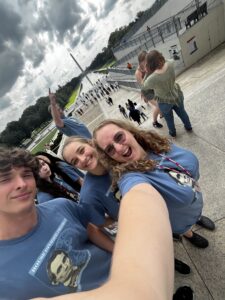 Growing up in a history-loving household had its benefits, such as going to Washington D.C. as often as time would allow it. However, it is not everyday that I got to go to D.C. truly knowing why certain quotes were etched into marble in the Lincoln Memorial. So, of course, when Professor Pinsker stood below the “The Gettysburg Address” explaining the context, I felt truly inspired. Who knew that Lincoln revised the speech three times after it was delivered? Certainly not me. Professor Pinsker also made it notable to mention the current “cultural wars” raging behind the scenes, and how certain signs may be hung up asking for feedback. This raised several questions to my mind: why are we erasing history? Who said that history needed to make us comfortable? What can I do about this? Of course, my thoughts were quickly swept away as we made our way down the smooth steps of the Lincoln Memorial and marched in double time to the Martin Luther King Jr. Memorial.
Growing up in a history-loving household had its benefits, such as going to Washington D.C. as often as time would allow it. However, it is not everyday that I got to go to D.C. truly knowing why certain quotes were etched into marble in the Lincoln Memorial. So, of course, when Professor Pinsker stood below the “The Gettysburg Address” explaining the context, I felt truly inspired. Who knew that Lincoln revised the speech three times after it was delivered? Certainly not me. Professor Pinsker also made it notable to mention the current “cultural wars” raging behind the scenes, and how certain signs may be hung up asking for feedback. This raised several questions to my mind: why are we erasing history? Who said that history needed to make us comfortable? What can I do about this? Of course, my thoughts were quickly swept away as we made our way down the smooth steps of the Lincoln Memorial and marched in double time to the Martin Luther King Jr. Memorial.
MLK Jr. Memorial
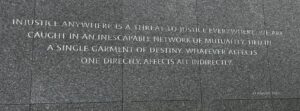
As I stood in front of a granite wall with a quote staring back at me, I continued my pondering. This whole seminar was about reflection, and now I had the perfect chance to take a jab at it. The MLK Jr. quote that spoke to me the most, especially in the current political climate, was the following: “Injustice anywhere is a threat to justice everywhere. We are caught in an inescapable network of mutuality, tied in a single garment of destiny. Whatever affects one directly, affects all indirectly.” I have read this quote a plethora of times in school, but reading it in the capitol of the United States, on a historical college seminar, in the year of 2025 felt more impactful than ever. I stood there at the wall for several minutes, my throat seeming to close up at the reality of the nationwide situation. Then it hit me: I had the same amount of opportunity and power to change the world as any activist or historical figure that I would tear up reading about today. I left the memorial feeling awestruck, inspired, and called to action.
The National African American History Museum
I had been to the NHAAHM once or twice before, but I had spent most of my time on the upper floors. This museum is one of those museums where you could walk around for over two days and still have information to learn. I immediately knew I wanted to spend the majority of my 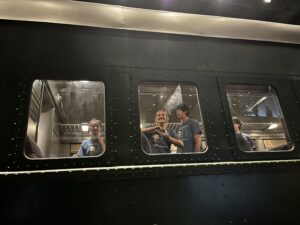 time in the historical gallery in the basement, and I was not disappointed. The whole time, I had the looming question of “what can I do to make their challenges and strife worth it?” I can confirm I was not the only person thinking this, as by the time my friends and I had reached the second concourse, all of our faces were wet and snotty. In a hidden corner of the concourse, however, was a small memorial for what some say was the kickstart of the Civil Rights Movement as we know it: the brutal murder of Emmett Till. I had spent a full day of my AP United States History class talking about this case, but seeing images face to face was just an indescribable feeling words cannot describe. In fact, the whole historical gallery left me incredibly emotional. I am usually told I ask too many questions, but I genuinely could not shake the question of what can I do to stop the current atrocities plaguing the nation, especially with how similar they are to the past? On a brighter note, it was incredibly amusing to see my friends appreciating the museum as much as I did. It was even more amusing to have them wave at me when they were in the model train car and I was sobbing beneath them.
time in the historical gallery in the basement, and I was not disappointed. The whole time, I had the looming question of “what can I do to make their challenges and strife worth it?” I can confirm I was not the only person thinking this, as by the time my friends and I had reached the second concourse, all of our faces were wet and snotty. In a hidden corner of the concourse, however, was a small memorial for what some say was the kickstart of the Civil Rights Movement as we know it: the brutal murder of Emmett Till. I had spent a full day of my AP United States History class talking about this case, but seeing images face to face was just an indescribable feeling words cannot describe. In fact, the whole historical gallery left me incredibly emotional. I am usually told I ask too many questions, but I genuinely could not shake the question of what can I do to stop the current atrocities plaguing the nation, especially with how similar they are to the past? On a brighter note, it was incredibly amusing to see my friends appreciating the museum as much as I did. It was even more amusing to have them wave at me when they were in the model train car and I was sobbing beneath them.
The Emancipation Memorial and Heading Home
Our final stop for the day was the Emancipation Memorial in Lincoln Park. While we were there, Professor Pinsker had us do an empathy test in order to understand why the memorial was still up even after major controversy, and why people would want it down in the first
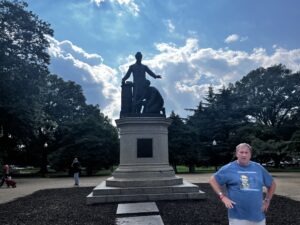
place. This exercise really brought together the thought process I had been lingering on all day. Empathy. The power of empathy is truly underused. I believe that many issues in the current world would be fixed if the general population took a lesson in empathy. I also realized that we have these memorials because of strong surges of empathy and admiration for the people that are erected. For example, without empathy, I do not believe there would have been an Emmett Till Memorial. Without empathy, there would not be a Lincoln Memorial. I would dare to say that without empathy, the 13th Amendment would not exist without empathy, either. Overall, the lesson I took from today was empathy and how it is used in history. That leaves me with one final question: how will history see my efforts in empathy?
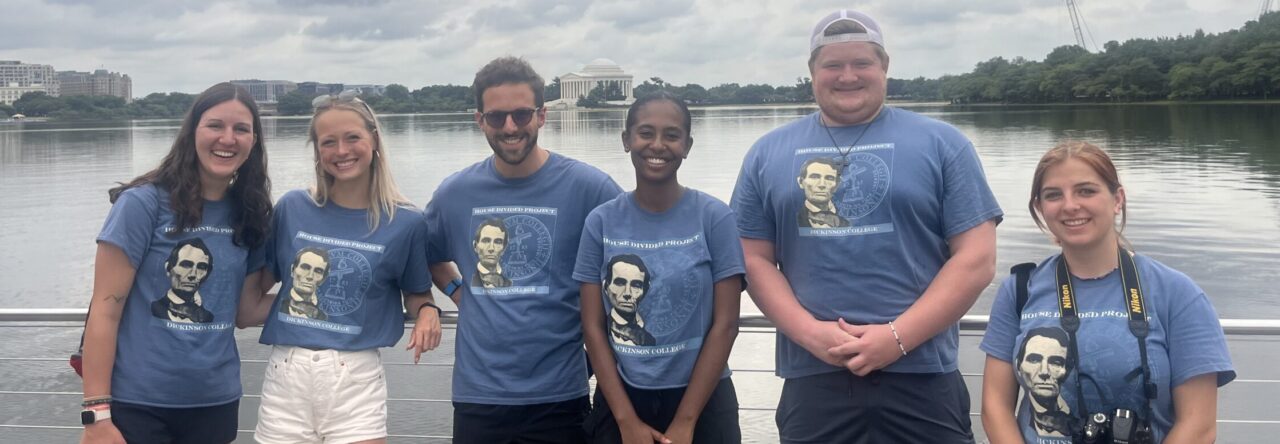
Leave a Reply